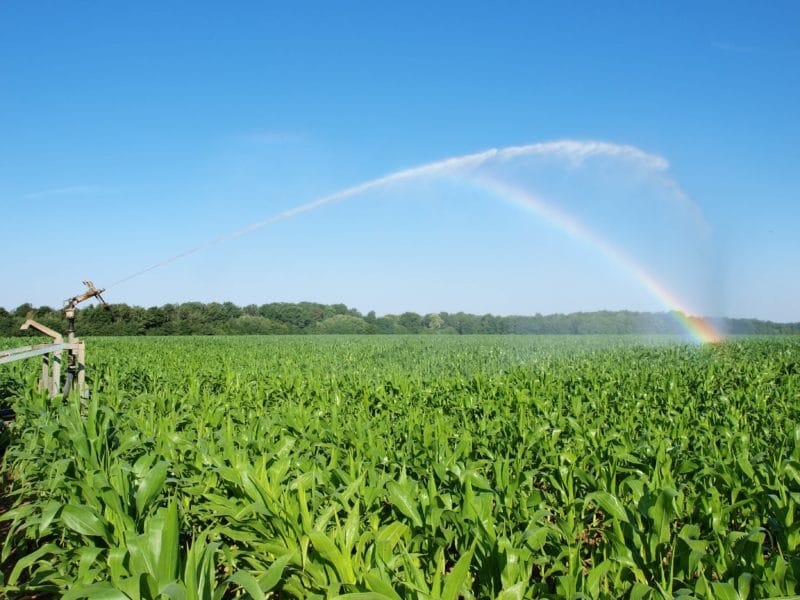
Seed Maize Irrigation: Paying Attention Every Step of the Way
Seed Maize Irrigation: Paying Attention Every Step of the Way

Although the general make-up of maize hybrid crops in terms of water-stress exposure is not much different from that of their parental lines, each development stage presents specific characteristics that influence the plant’s behaviour and dictate the proper irrigation method.
Male and female parental lines whose planting is timed so that they both flower at the same time require additional irrigation more often than grain maize.
Once past that stage, the root system of the parental lines is less competitive than that of hybrids. The maximum – final – rooting depth may be equal to that of the plant at its flowering stage but its density in, and occupancy of, the soil profile, as well as its water-extracting ability will be lower.
These data – as resulted from tests run by the ARVALIS – Institut du végétal under the seed-related, technical activities of the F.N.P.S.M.S. – are elements that are taken into account in the decision-making processes. Thus the rate of soil water reserve that can be easily accessed by the seed maize plant is estimated at 50 percent, as against 66 percent in the case of hybrid maize plants.
- Launching the irrigation during the internode elongation period, from ten leaves on, has proved to be crucial in seed maize production. The leaf area index (LAI) is heavily influenced by the available water supply during this period. The stressors that appear before the flowering prevent the male or female plants from attaining the maximum LAI. Good early-stage crop management helps to ensure a well-balanced growth rate of the two parental lines as well as a homogeneous female plant population, which is important for the ease of the detasseling work.
- The flowering-pollination stage is when the crop’s needs are at their peak (this is when the LAI is at its maximum) and its water stress sensitivity is highest. Although the stressors’ effects on the development of the female plant’s reproductive organs were well known, recent work has shown how much good irrigation management during this stage is important for pollen production. Thus, it is essential that the crop be provided regularly with enough water – depending on the climate context -, in order to secure the pollen production potential (the number of pollen grains per tassel), and even more importantly, the viability of the pollen, as this may go down by as much as 45 percent if the plant is stressed during this period.
- It is equally very important to sustain the plant’s nourishment during the stage following pollination, as the number of grains per square metre (an indicator of the subsequent yield in seed bags per hectare) and their filling (the weight of the grains) influence the final yield directly.
In quality terms, the effects of irrigation during these later stages can prove decisive for the grains’ calibration and their germination capacity. Nevertheless, during our trials, the small water supply differences at the end of the crop cycles produced few differences among the water supply regimes, from those points of view. The 50-percent grain moisture remains the most reliable indicator of when to stop irrigating, in seed production.
Six Years of Trials Focusing on Seed Production in Southwestern France
Together with the GNIS – the French Interprofessional Group for Seed and Seedlings* –, the F.N.P.S.M.S. has been carrying out pilot field trials since 2013, at various water restriction levels. Conducted by ARVALIS teams, the trials have compared various irrigation rates, covering the plants’ water needs at different levels. Thus a control irrigation level, which was termed “well-irrigated” was compared with various restrictive irrigation scenarios.
The trials were first aimed at describing the effects of water stress on the plants’ physiology, then on the yield components, and finally, on quality. In recent years, the trials have focused more on the development of irrigation strategies for crops grown under water limitations.
____
*Groupement National Interprofessionnel des Semences et Plants